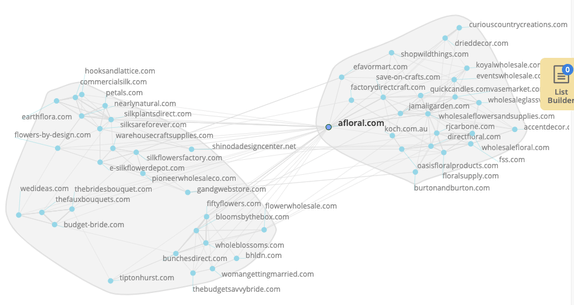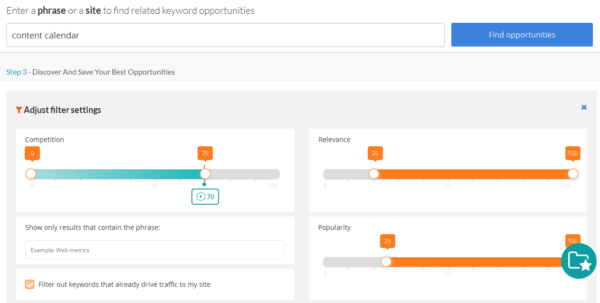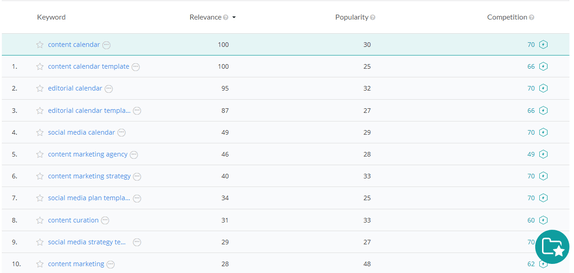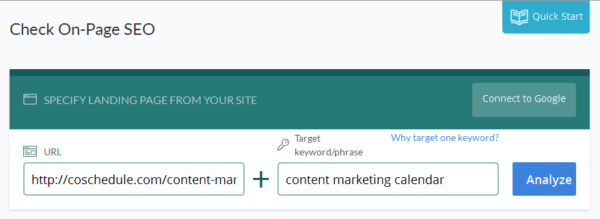
Writing Content for a Website: The question of how to write content for a website is one of the biggest concerns among new content marketers. It may seem that you’re staring at your notes and wondering how you’re going to make them into effective, beautiful web copy.
Having said that, you have come to the right place if you are looking for information about writing website content, including landing pages. Below, we will break down the major steps involved. Additionally, we will share with you how you can use keyword research, search engine optimization, and non-copy page elements to create highly effective, powerful, and results-oriented website pages.
You cannot write good content for a website if you don’t know why you are writing it in the first place.
What is the purpose of the website content? Does it sell a product? Is it intended to attract new clients to the website? Do you want to build traffic in order to support advertising and sponsorships? If you know the main objective of the content you’re creating for your website, you’ll be able to write copy that will help you accomplish that objective better.
You should always know who you are writing for before you even write a single word of content for a website.
You need to remember that you are writing for human readers. People! The words you choose and the way you choose them will depend on things such as:
It is possible to research the audience of your website in a number of ways. A number of tools are available from Alexa, Semrush and Ahref that are useful in this regard. You can, for instance, use Audience Overlap to see other sites that your visitors are likely to visit based on their behavior. In addition, the Audience Interests feature shows you topics they are likely to be interested in. Be of interest to them.

It is also possible to research your audience by asking them questions directly, using your analytics program to view actions they take on your website, and looking for common traits among your best customers.
Researching your competitors will also provide you with important insights.
The writing of good content on a website depends on an in-depth understanding of the competitive landscape. When comparing your website to your competitors’, you will be able to discern important insights that will impact the copy you write for your website. Here are some reasons why:
It is during this exploratory phase that you are able to evaluate your options before you begin writing.
There are a number of useful tools available in Alexa for analyzing competitors. Use the Audience Overlap tool to find a list of competitors that may be of interest. You can then analyze each competitor in a number of different ways using this list.

Using the Competitor Keyword Matrix, for example, you can find out which keywords your competitors are getting traffic for. Using that information, you will be able to figure out how competitive your industry is in terms of SEO. Using that information, you will be able to determine the strategy regarding the content of your website. You should spend some time on each of the top competitors’ sites to get a feel for their style, topics, and how they differ from one another.
Please note that at this stage, you are looking at competing websites as a whole. In the future, you will also take a look at the individual web pages that compete with the one you are writing.
Now that you have researched your audience as well as your competitors’ content, you will be able to formulate what you want to say.
In order to prepare yourself for writing website content, make sure you have a clear picture of how all the pages are going to work together.
Whether you are overhauling an existing website or creating a completely new one, a wireframe could be very useful to you. Putting together a list of pages and the topic they will cover can be as simple as sketching them out.
Consider the following:
There are many types of website content you can find on the internet. Copy is prepared and displayed in various ways to serve different purposes ranging from long-form content and blog posts to sidebar blurbs and product descriptions.
We are now ready to take a look at the steps for writing copy that will go on your website. Let’s begin by understanding the purpose of the page you are going to write.
You should decide what the purpose of a particular page on your website will be before you begin writing content for it. The purpose of a particular page will be different depending on its purpose. When planning out how to write the content for your website, make sure the copy on each page serves its intended purpose.
A good example of this is your home page, which serves as the main entrance to your website and provides people with an overview of who you are and what you do at a glance. In other words, your home page content should give people a little bit of information about the most important concepts and help them find where to go next on your site.
In addition to writing content for your website, you may also be writing landing pages. According to Unbounce, landing pages are web pages that have been specifically designed to accomplish a single, focused objective. They are designed to drive the user to take action and are created for one of the following reasons:
As website content, blog posts are also website content, but their purpose usually is to educate and to build brand awareness. There is a difference between term pages and landing pages. The former are time-stamped pages often related to something timely, topical, or newsworthy, while the latter are evergreen pages.
Depending on the nature of your pages, they might have been designed to bring in traffic from people who are searching online. It is important that you decide on a good keyword to target in your writing if the purpose of your content is to attract searchers.
A keyword is the primary term or phrase that you want to be associated with your website by search engines. Identify the keyword that you want to target before you may even begin writing.
In order to identify the best keyword for your page, you can use Alexa’s Keyword Difficulty Tool.
It would be helpful if you could enter a phrase or term that relates to the topic of your page. By using the filter, you can narrow your result list to terms that are low-competition keywords, closely related to your phrase, popular among users, and not a phrase that is already driving traffic to your site.

An example of how Alexa’s Keyword Difficulty filters work for the keyword phrase “content calendar.”
View the report and choose a keyword that is within your reach in terms of competitiveness (it is marked with a bolt icon on the report) and widely used by searchers (it has a high popularity score). The term you choose as your primary keyword should be assigned to your page.

If you want to learn more about how to select keywords, you can read our article on The Essential Keyword Optimization Cheat Sheet for Better SEO. Once you have gone through the keyword discovery process and selected your primary keyword, read our article on how to write your website’s content.
Can you tell me which pages your page will compete against? The knowledge that you have about this will enable you to spot opportunities to create a better page.
Among the best ways of doing this is to simply enter your target keyword into Google and see which sites are currently showing up on the first page of the search results. Look at these sites one by one and make sure that you notice the following:
If you are interested in knowing which pages in your space are popular on social media, you can check Alexa’s Content Exploration tool. If you find pages that resonate with people on social media, such as Twitter, you can gain insights into what people want to read.

Alexa’s Content Exploration tool found the most popular Twitter content relating to the term “diamond jewelry”.
You should now have a pretty good idea of the type of content you should focus on in order to make some progress. At this point, it is time to begin preparing the content for each page.
The best way to write good content for a website is to start with an outline.
You should gather ideas and resources, taking into account the time necessary for interviews with subject matter experts and sales personnel at your organization to form your outline.
The next step would be to draft the first draft of the copy for the web page.
The page copy should be written.
Immerse yourself in the world of writing. Keep these tips in mind when you are writing content for your website pages.
Make sure you pay special attention to the way you wrap up the page.
During your course of learning how to write content for a website, you’ll want to consider ways in which you can encourage the reader to take action from the page. Make sure at the end of every page there is a clear call to action to help initiate that action. It is very important that you use these tips to explain to the reader exactly what you want them to do and why they should take action.
Now that we have addressed the end of the page, it’s time to take another look at the beginning of the page.
When you started working on the content for the page, you probably wrote a headline for it. When you have completed writing the whole page, you will be ready to revisit it and tweak it to make it more effective.
In my experience, writing headlines for landing pages is somewhat different from writing headlines for blog posts and articles. Despite the fact that both are intended to grab attention, headlines for blog posts are designed to make readers interested in a topic, whereas headlines for landing pages are designed to make readers interested in a product, service, incentive, or offer.
The headlines for the content of the website should be:
The headlines are one of the best places to concentrate your efforts, as the right headline can make a big difference in the performance of your page.
The guidelines for writing content for a website go beyond just copy. The non-copy elements on a landing page, as well as other website content, are very important if you wish to create successful, high-converting landing pages and other website content. Add visuals that help the reader understand concepts (rather than just relying on the words to describe them).
The page can be broken up and important information can be drawn to the reader’s eye by using the following:
When you put effort into how you design and write the content for your website, it will likely go a long way towards increasing the chances that your visitors will feel they have found the information that they need.
It is important to set a page aside once you have written the content, even for just a few hours. You will be able to see ways of improving it when you come back to it with fresh eyes.
You may find that you are able to do the following at this point:
You may be surprised at what jumps out at you when you do a little digging. You may also want to optimize the content of your website for search engines during this time.
In certain cases, depending on the purpose of the page, you may want users to find it through a search engine. Therefore, when you write content for website pages, try to use SEO best practices which will help improve your page’s ranking for the keywords you want to target.
Make sure that you go back over your content once you have written it and ensure that the keyword is used throughout. In order to rank well in search engines, you should aim for a keyword density of about 1-2%, as it is enough to inform search engines what the page is about without stuffing it with too many instances of the same word, which may negatively affect your search engine rankings.
As well as utilizing the keyword in the main body copy, it should also be used in the following SEO content elements:
It is a good idea to link to your new website content from other pages on your website so that both users and search engines will be able to find it. Having onsite links can help readers find what they need. They can also send signals to search engines telling them what the page is about, and that it is valuable. Also, whenever it is natural, link to landing pages with anchor text that includes the main keyword of the page whenever possible.
Despite the fact that your page has been optimized, it is easy to miss opportunities or make mistakes. If you want to check your on-page SEO and to make sure you are properly optimizing a page, then you should use Alexa’s On-Page SEO Checker. The tool scans your page and provides detailed information about the errors you have found along with suggestions on how to correct them.
Use the On-Page SEO Checker to enter your page’s URL and primary keyword.

Use the report’s instructions to make changes to your page that will improve your SEO.

I believe you will be pleasantly surprised to learn that your work really just gets underway at this point if you are learning how to write content for a website. The content of your site needs to be kept fresh, and now is an excellent time to plan how you’ll update it in the future.
If you are writing focused landing pages, you should test different versions of your page to see which of these produces the highest conversion rate (the percentage of users who complete the desired action on the page).
Create different versions of your page with different variations of:
A/B testing can then be done to determine which of your pages connects with your users and produces the best results.
If you follow the steps above, you get to learn how to write site content that will attract readers and search engines, make sales, and ensure that each page is doing everything it can to help you grow your business.
If you like our works, case studies, and blog then you can follow us. so that you will get every update about works, case studies, and blogs.

Are you #readytogrow? Give a Chance to Gradual Grower so that we can Grow Your Business Together…